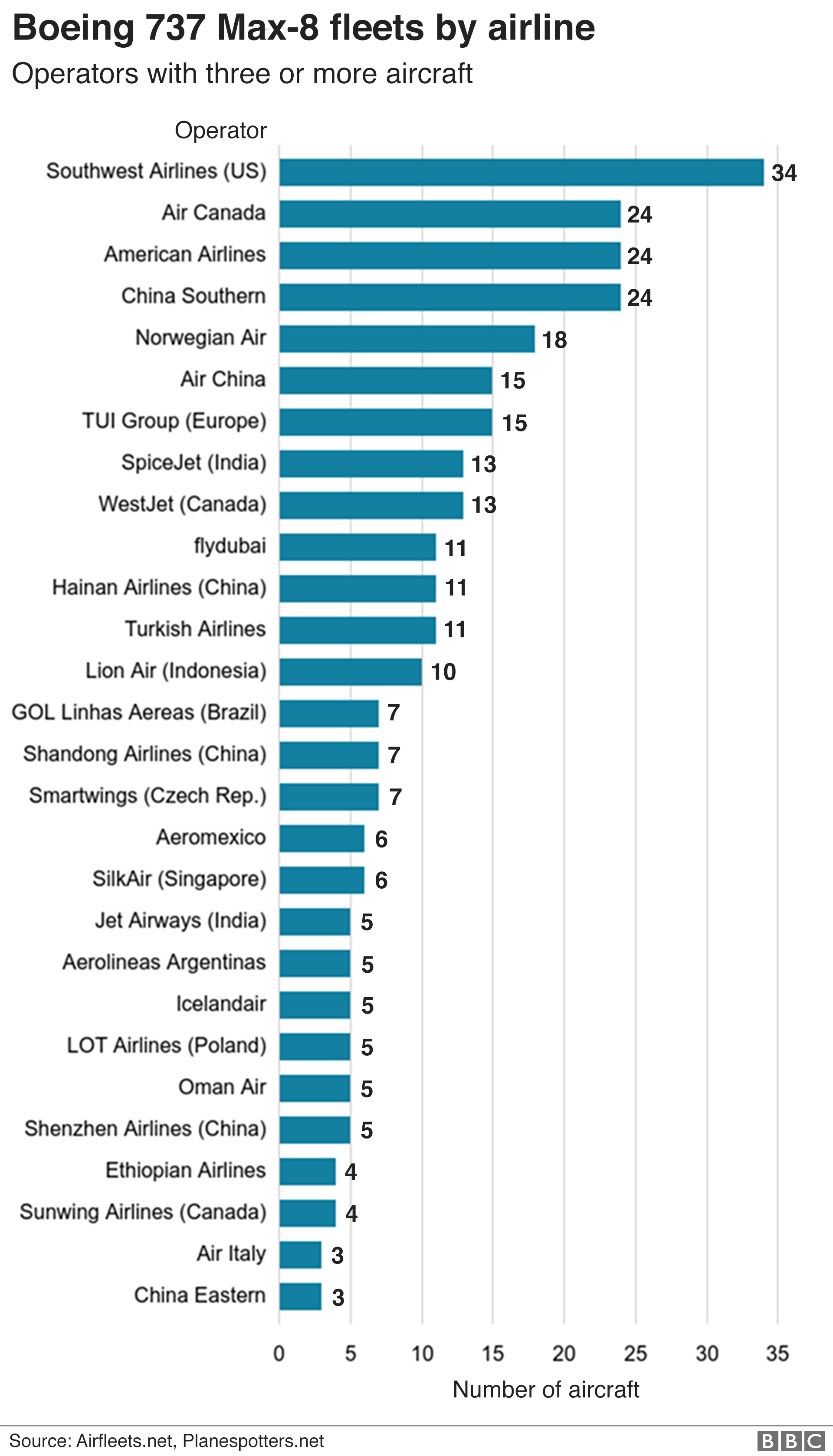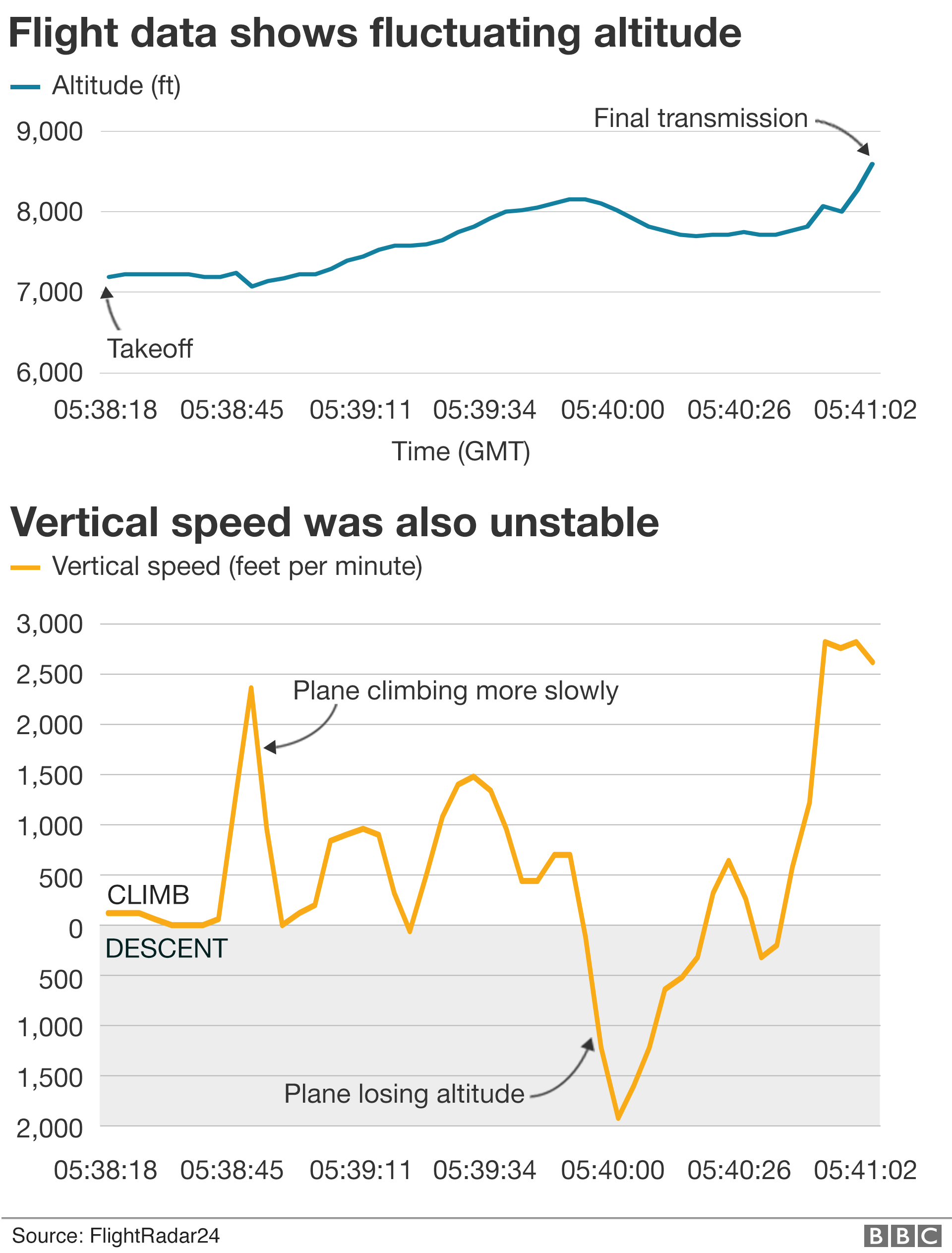Boeing grounds entire crash aircraft fleet
From BBC

Boeing has grounded its entire global fleet of 737 Max aircraft after investigators uncovered new evidence at the scene of the fatal Ethiopian Airlines crash.
The US plane-maker said it would suspend all 371 of the aircraft.
The Federal Aviation Administration said fresh evidence as well as newly refined satellite data prompted the decision to temporarily ban the jets.
The FAA had previously held out while many countries banned the aircraft.
The crash on Sunday in Addis Ababa killed 157 people.
It was the second fatal Max 8 disaster in five months after one crashed over Indonesia in October, claiming 189 lives.
Boeing said it “continues to have full confidence in the safety of the 737 Max”.
However, it said that after consultation with the FAA and the National Transportation Safety Board – which is conducting an investigation into the Ethiopian Airlines crash – it had decided to ground the flights “out of an abundance of caution and in order to reassure the flying public of the aircraft’s safety”.
President Donald Trump initially announced that the FAA would be making an emergency order following “new information and physical evidence that we’ve received from the site and from other locations and through a couple of other complaints”.
The FAA said: “The grounding will remain in effect pending further investigation, including examination of information from the aircraft’s flight data recorders and cockpit voice recorders.
American Airlines said 24 of its aircraft would be affected by the suspension, adding: “Our teams will be working to rebook customers as quickly as possible, and we apologise for any inconvenience.”
United Airlines said that its Max aircraft account for roughly 40 flights a day.
It said: “Through a combination of spare aircraft and rebooking customers, we do not anticipate a significant operational impact as a result of this order.”








Earlier on Wednesday, Canada grounded the planes after its transport minister Marc Garneau said he had received new evidence about the crash.
He said that satellite data showed possible similarities between flight patterns of Boeing 737 Max planes operating in Canada and the Ethiopian Airlines plane that crashed.
He said: “As a result of new data that we received this morning, and had the chance to analyse, and on the advice of my experts and as a precautionary measure, I issued a safety notice.”
Analysis: Theo Leggett, BBC international business correspondent
With other aviation authorities around the world deciding to ground the 737 Max, the FAA – which provides the safety certification for the new aircraft – was under intense pressure to fall into line.
What’s interesting here, though, is what the FAA has actually said.
While the UK’s Civil Aviation Authority, for example, said its actions were simply precautionary, the FAA has gone further.
The US regulator, which is actually involved in the investigation, says it has made its decision as a result of new evidence collected at the site and analysed today – as well as satellite data.
That will have set alarm bells ringing at Boeing’s headquarters in Seattle.
Since the accident, analysts have focused on similarities between Sunday’s tragedy, and another crash involving a 737 Max off Indonesia last October.
Has the FAA found evidence that suggests those similarities were more than just superficial?
And does that mean Boeing’s MCAS anti-stall system, already implicated in the Indonesia crash, may also have played a role in the latest disaster?
It has also emerged that pilots in the US had complained late last year about problems controlling the Boeing 737 Max 8 during take-off.
They reported difficulties similar to those that contributed to the fatal Lion Air crash in Indonesia in October.
The Ethiopian Airlines plane crashed just six minutes into its flight.
Flightradar24, an air traffic monitor, said the plane’s “vertical speed was unstable after take-off”.










Documents reveal that pilots flying last November reported engaging autopilot only for the aircraft’s nose to pitch lower, prompting the warning system to exclaim: “Don’t sink! Don’t sink!”
Two US pilots reported separate incidents involving the 737 Max’s automatic anti-stalling system in November.
The feature, which was new to the 737 Max family, is designed to keep the plane from stalling.
The system prevents the aircraft from pointing upwards at too high an angle, where it could lose its lift.
However, according to filings with the US Aviation Safety Reporting System, which pilots use to disclose information anonymously, it appeared to force the nose down.
In both cases, pilots were forced to intervene to stop the plane from descending.


After the Lion Air crash, Boeing issued a bulletin on what to do regarding erroneous readings from the sensor, which sends out information about what angle a plane is flying at.
But another pilot said that “it did nothing” to address the problems with the sensor.
They added: “I am left to wonder: what else don’t I know? The flight manual is inadequate and almost criminally insufficient.”
For more on this story go to; https://www.bbc.com/news/business-47562727
EDITOR: Cayman Airways fly two newly acquired 737 Max aircraft and were the very first airline to ground them.





